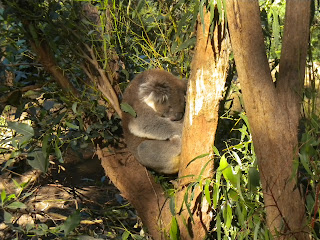 |
| A sale proceeding at the Wagga Wagga Livestock Marketing Centre |
I was very excited to visit the Wagga Wagga Livestock Marketing Centre this morning and get a glimpse into the flow of the beef and sheep industry. It is very different from the United States so I will try and summarize as understandably as possible. The cattle are initial bought from the producer through agents and then brought to the livestock market to be sold to another agent or to the abattoir. Cattle prices are very different here as well. The auctioneer ( whom doesn't chant bids but simply speaks what recurrent bid is) sells on a cents per kilogram basis, which when converted was roughly 85 cents per pound from what portion I saw today. They sell around 1200 head of cattle every Monday and 35,000 sheep every Thursday, which winds up being about 500 head of cattle an hour. The Wagga Wagga facility is older and operates somewhat differently than others in Australia because they allow livestock to be brought in up to 3 hours before the sale where it's neighboring centre is 12 and charge approximately a 4.5% commission compared to 3% in other locations. Next we traveled across the road to the Tey's Abattoir. I found it fascinating that they actually have an underground trail that enables them to herd the cattle purchased at Wagga Wagga directly to the abattoir, although they only buy a small portion of their production from there. The location we visited today was originally owned by Cargill untilSeptember of this year when the two companies merged making them more geographically optimal (Cargill owning many facilities in Victoria and New South Wales and Tey's being dominant in Queensland. We unfortunately did not get as detailed a tour as in their main competitor JBS, but from what I did see it was a much more Americanized plant with a more functional layout, probably due to the newer structure and original owners being Cargill. Summing up the day, we visited the Jindalee feedlot owned and operated by Tey's. They can have up to 30,000 head but are limited due to their water source. They are a very similar operation to those in the United States with some differences being only 100 days on feed and a lack of feed additives due to legality reasons.












